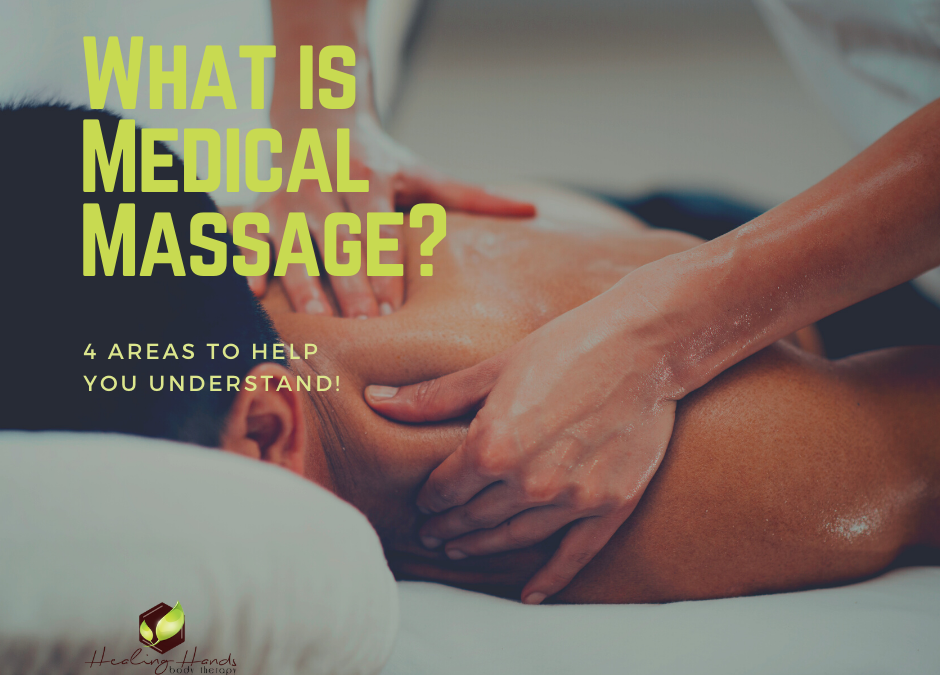Many times we think of massage as something you indulge in on a special occasion at a spa or on a cruise ship. Or maybe it is part of someone’s regular health routine. But recently, a new term has gained popularity in the US – “Medical Massage.”
Thinking it might just be a new marketing term?
Or maybe there is some special, new technique that is used only during a “medical massage?”
In short, the answer to both is simply – no.
Let’s Start With Modality
To start understanding what a Medical Massage is, we need to understand the term “modality.” In the massage field, modality refers to the technique that a massage therapist specializes in or will utilize on a client for their particular need or both.
For example, if a client is looking to relax, the Swedish Massage would typically be the modality that is used to achieve this goal. If an athlete needs to focus on areas that are injured or overused, their professional would likely employ the Sports Massage modality.
One Modality Does Not Fit All
Now that we have an understanding of what modality means, let’s get a better understanding of the application.
There will always be someone trying to promote a new and exciting modality. Additionally, many different modalities are powerful in their own way. But ultimately, using a single modality is a narrow approach because it forces the soft tissue problem to fit into the parameters of that modality rather than the root of the issues trying to be addressed.
The biggest fault with the singular modality concept is that one believes that their specialization massage is the cure-all, fix-all modality. While that modality may help solve many problems, there are also just as many that it cannot solve. This results in many clients trying a particular modality, not having their issue 100% resolved, and giving up on massage entirely.
For example, if a client has back issues, a Deep Tissue massage may work well for some time but they could also benefit from Deep Tissue or Hot Stone Massage. Unless the therapist recognizes this, in addition to a few other indicators, the client will not receive the ideal outcome for the long-term.
A modality is simply just a combination of techniques. Massage therapy, in its simplest form, is a combination of seven different techniques in over 60 variations of these techniques.
Massage therapy in its most complex form is the therapist fully understanding the physiological effects of each technique as well as knowing when, where, why, and how to apply the technique.
Also, the therapist understands when to combine techniques and what techniques should follow another technique. This understanding of massage therapy is decades in the making as well as countless scientific studies that show the physiological effects of said techniques. This is the birth of Medical Massage.
Multi-Modality = Medical Massage
Medical massage is a concept. It is an approach that does not subscribe to any one technique or modality. It is the deductive reasoning of the therapist. It is the therapist looking for the “why” behind a particular soft-tissue problem and using their knowledge of all the massage techniques to solve that problem. It is a perfect blend of education, training and experience aided by intuition.
Every case that comes across a therapist’s table is unique. The therapist must understand the concepts of Medical Massage in order to apply the relevant techniques to reach the client’s desired outcome.
How Else Medical Massage Is Different
In addition to looking for the root cause behind an issue, Medical Massage also encompasses these additional differences:
- Medical Massage utilizes multiple approaches to solving a problem. Whether it is employing different modalities or utilizing other therapies, a Medical Massage Therapist will look for a broadspectrum approach to help resolve muscle issues.
- A Medical Massage Therapist is relational. Their focus isn’t to see a client a couple of times with nothing in between. They work towards a relationship with their clients that includes follow-up recommendations and a specific, long-term plan for sustained relief.
- Stress relief and relaxation are a few of the out-comes a Medical Massage works towards. There are many other outcomes that are desired to include pain management, relief in nerve compression, and an increase in circulation.
The more a therapist understands the Medical Massage concepts as well as the soft-tissue pathologies of the body, the more effective and consistent their outcomes will become.

